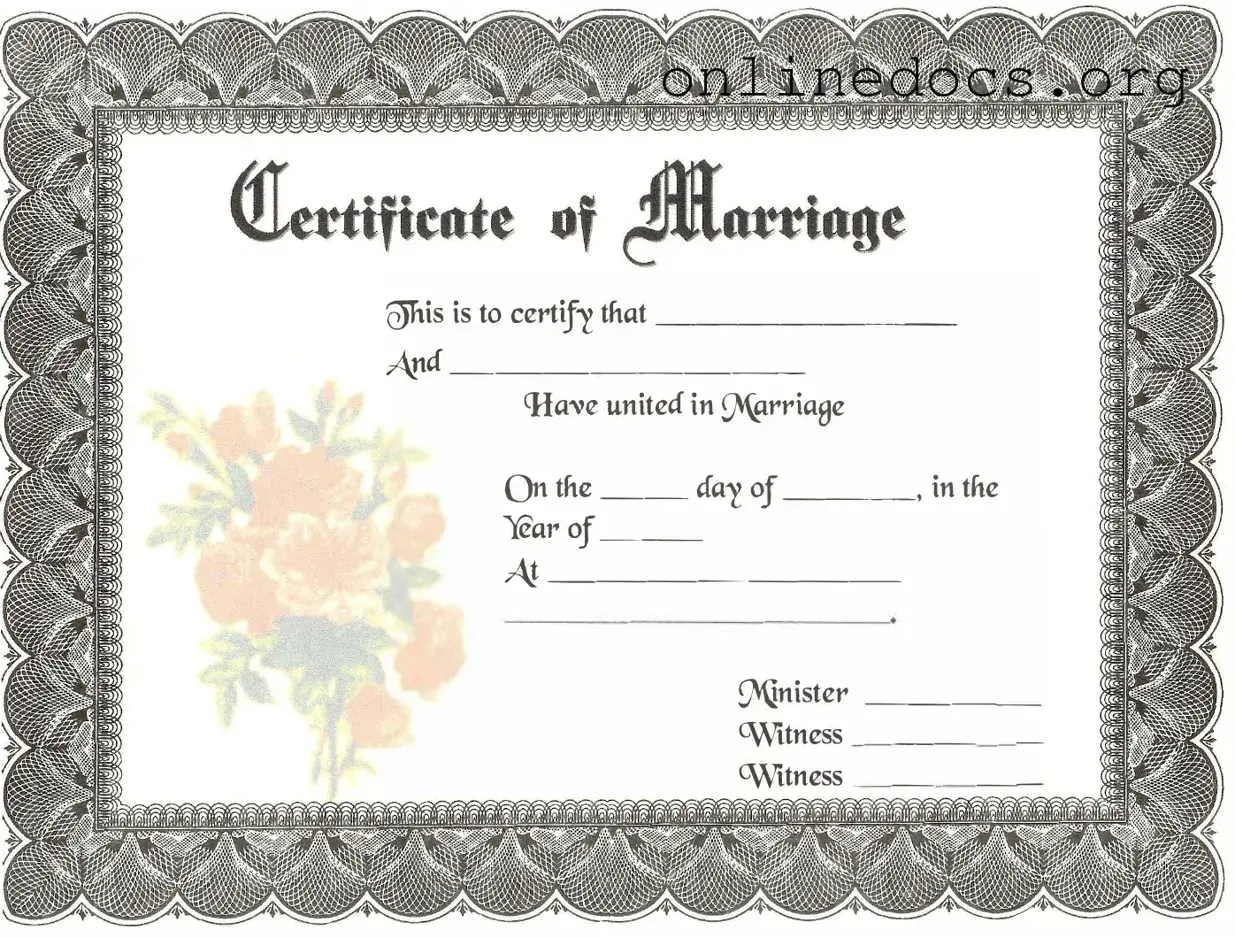A birth certificate serves as an official record of an individual's birth. Like a marriage certificate, it is issued by a government authority and includes vital information such as the individual's name, date of birth, and parents' names. Both documents are often required for legal purposes, including applying for identification and other official documents.
A divorce decree is a legal document that finalizes the dissolution of a marriage. Similar to a marriage certificate, it is issued by a court and contains essential details about the marriage, such as the names of both parties and the date of the marriage. Both documents serve as proof of marital status and may be required for legal processes, such as remarriage or property division.
A death certificate records the death of an individual. This document, like a marriage certificate, is issued by a government authority and includes important information such as the deceased's name, date of death, and cause of death. Both documents are vital for legal matters, including settling estates and accessing benefits.
An adoption certificate is an official record that confirms the legal adoption of a child. Similar to a marriage certificate, it is issued by a court and includes details about the adoptive parents and the child. Both documents establish legal relationships and may be necessary for various legal and administrative purposes.
A civil union certificate serves as a formal recognition of a civil union, which is similar to marriage but may not be recognized in all jurisdictions. Like a marriage certificate, it is issued by a government authority and contains information about the partners involved. Both documents provide legal rights and responsibilities similar to those of married couples.
A cohabitation agreement outlines the terms of living together as a couple without being married. While not an official certificate, it serves a similar purpose in defining the relationship and responsibilities of the parties involved. Both a cohabitation agreement and a marriage certificate help clarify legal rights and obligations, although one is formal and the other is a private arrangement.
A property deed is a legal document that conveys ownership of real estate. It is similar to a marriage certificate in that it establishes a legal relationship between parties. Both documents may be required in legal proceedings, such as when dividing assets in a divorce or determining inheritance rights.
A will is a legal document that outlines how an individual's assets should be distributed after their death. It shares similarities with a marriage certificate in that both documents play a role in determining legal rights. A marriage certificate may be needed to validate claims in a will, especially regarding spousal inheritance rights.
If you're looking to outline your estate effectively, create a comprehensive Last Will and Testament to ensure your wishes are honored. For more information, visit the essential guide to Last Will and Testament forms.
A power of attorney is a legal document that grants someone the authority to act on another's behalf. While it is not directly related to marital status, it is similar to a marriage certificate in that it establishes a trusted relationship between two parties. Both documents are crucial for making decisions and managing legal matters.
